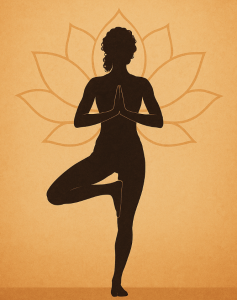Regular and steady blood supply is essential for good physical health. Eastern medical traditions suggest that the mind is the driver of subtle energy in the body and that blood follows that energy. If the mind is clogged (neurotic, anxious, upset), it interferes with the free flow of energy, which disturbs blood circulation and negatively affects our health. Merci Gracia
To function at our greatest capacity, our physical, energetic, mental-emotional, intuitive and spiritual being is genetically encoded to continuously move toward integration and balance. Both science and religion support this understanding of our intra- and inter-connectedness with all of life. Western faith systems teach that “it’s not up to us what we learn, but only whether we learn through joy or through pain and suffering.” As an Eastern-born philosophy, yoga differentiates between pain and suffering through its teaching that “pain is inevitable but suffering is optional.”
A healthy mental outlook isn’t just something nice we adopt to make ourselves feel better; our total well-being depends upon it! Accepting this moment as it is, letting go of negative stories and feeling our feelings is how we … flow with life. Merci Gracia
The pain of losing someone we love, whether through distance, divorce or death, definitely requires time for feeling sad and grieving. However, pain turns into suffering when we will not accept the ending and turn the loss into our ongoing daily negative experience. Making someone’s ‘death’ about your life blocks love and perpetuates suffering because now you are the solo host of your own personal pity party. The verbalized or silent echo of “Why me,” “Poor me” signals an unwillingness to accept each moment as it is.
Pain, in many forms, will certainly cross our path, but we can choose to live without suffering or what yoga calls kleshas. Klesha, in Sanskrit, means poison of the mind. The Yoga Sutras of Patanjali reference five kleshas, or self-inflicted suffering, which inhibit our ability to experience the present moment as it is, and thus, our true self. The good news is whenever we find ourselves suffering, we know we are operating from one or more of these poisons. The five causes of suffering are —
1. Avidya (spiritual ignorance),
2. Asmita (egoism),
3. Raga (attachment/attraction),
4. Dvesha (aversion), and
5. Abhinivesha (clinging to life/fear of death).
The mental affliction, Avidya, reflects our spiritual ignorance (lack of knowledge), false knowledge, and misunderstandings (misconceptions). Interestingly, it is a part of the other four kleshas. So, the really good news is this — if we alleviate our ignorance and misconceptions, we alleviate the other four kleshas.
Avidya or ‘ignorance’ is the base of the other four afflictions (and possibly every single affliction there is). It means ignorance of Self. When we don’t truly know ourselves, we stay ‘in the box’ of ego (‘asmita’). Being in the box results in being overly attached to pleasures (‘raga’), and resistant to dislikes (‘dvesha’). Whether we are aware of it or not, we also cling to the life in the physical body (‘abhinivesha’), resulting in dukkha (suffering). Rezzan Huseyin
Thus with true knowledge (vidya), all poisons can be avoided. Vidya is the true spiritual knowledge that rises from within. It is not worldly or external knowledge but rather knowledge of self. Ask yourself the following questions —
Do you know what is right for you or are you swayed by others?
Do you rely on something/someone to tell you what is safe and good?
Can you name your top 3 values and do your actions support them?
Does your life lack purpose?
When we can easily answer each of these questions, we are well on our way to knowing who we are and conquering suffering.
As I pointed out earlier, balance and integration are a whole-being experience. Answering the questions above brings your mental-emotional and intuitive being into greater alignment. To do the same for your physical, energetic and spiritual beingness, use the Yoga Actions below with each of the restorative poses and notice what emerges in each moment.
YOGA ACTIONS:
- While you are in each pose, notice what you do not know. Confusion is often the emotional sensation. Discomfort or even pain is the physical sensation. If there is pain, adjust yourself with higher supports.
- If there is discomfort, ask yourself, “Why am I feeling this confusion or discomfort?” You may need to ask Why five times to move beyond superficial symptoms into causal source.
As an example:
1. Why am I feeling discomfort in my upper thoracic? Because I hold tension there from drawing my shoulders in toward my midline.
2. Why do I draw my shoulders inward? To protect me from hurt.
3. Why do I protect myself from hurt? Because hurtful comments and actions pierce my heart.
4. Why do hurtful comments pierce my heart? Because I allow others’ words and actions to disturb my calm and contentment.
5. Why do I allow others to disturb my calm and contentment? Because I am forgetting that others’ hurtful comments or actions are a reflection of who they are not who I am.
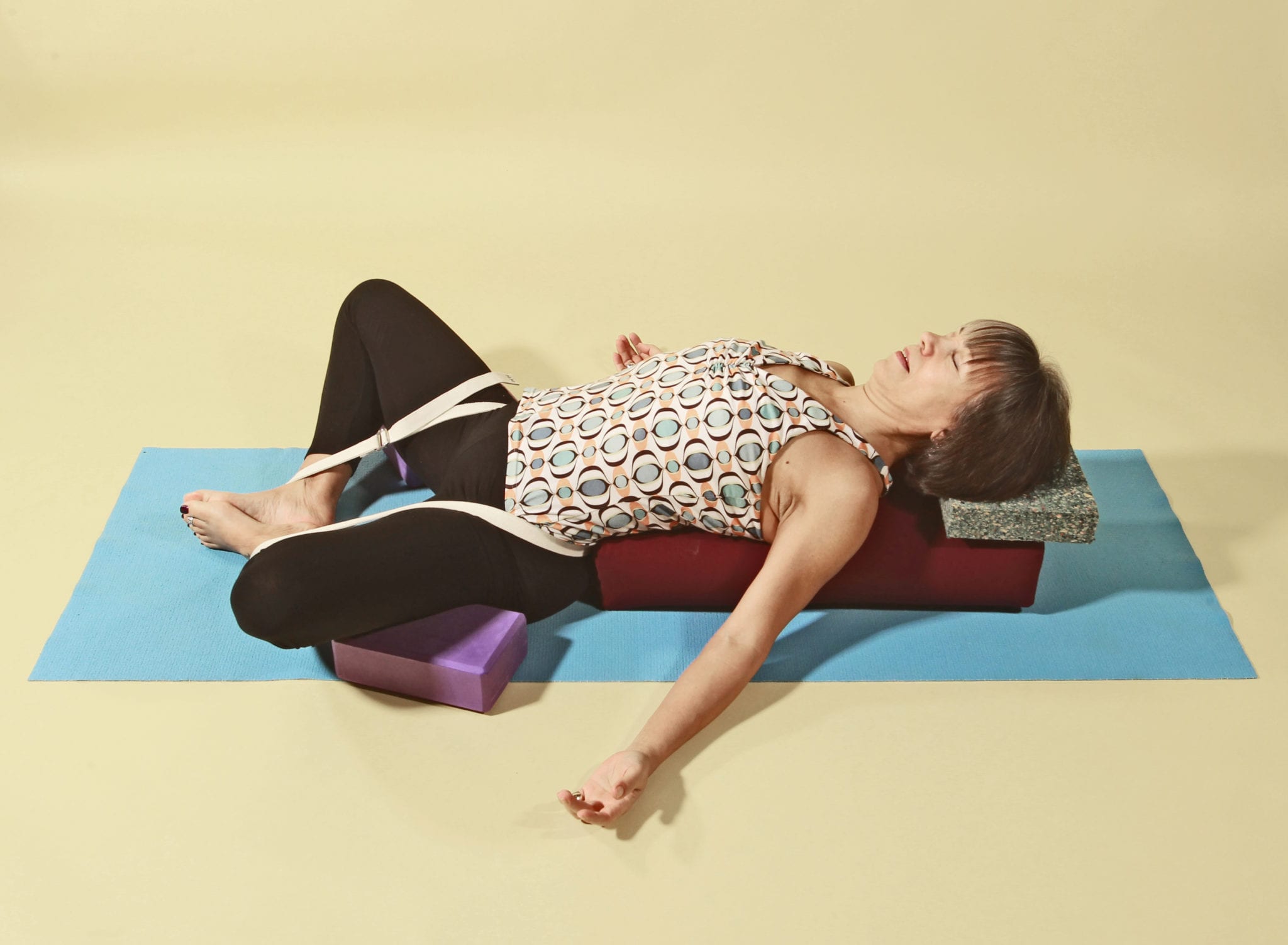
SUPTA BADDHA KONASANA (Supine Bound Angle Pose) 10 m
– vertical bolster under spine, support for head, legs belted
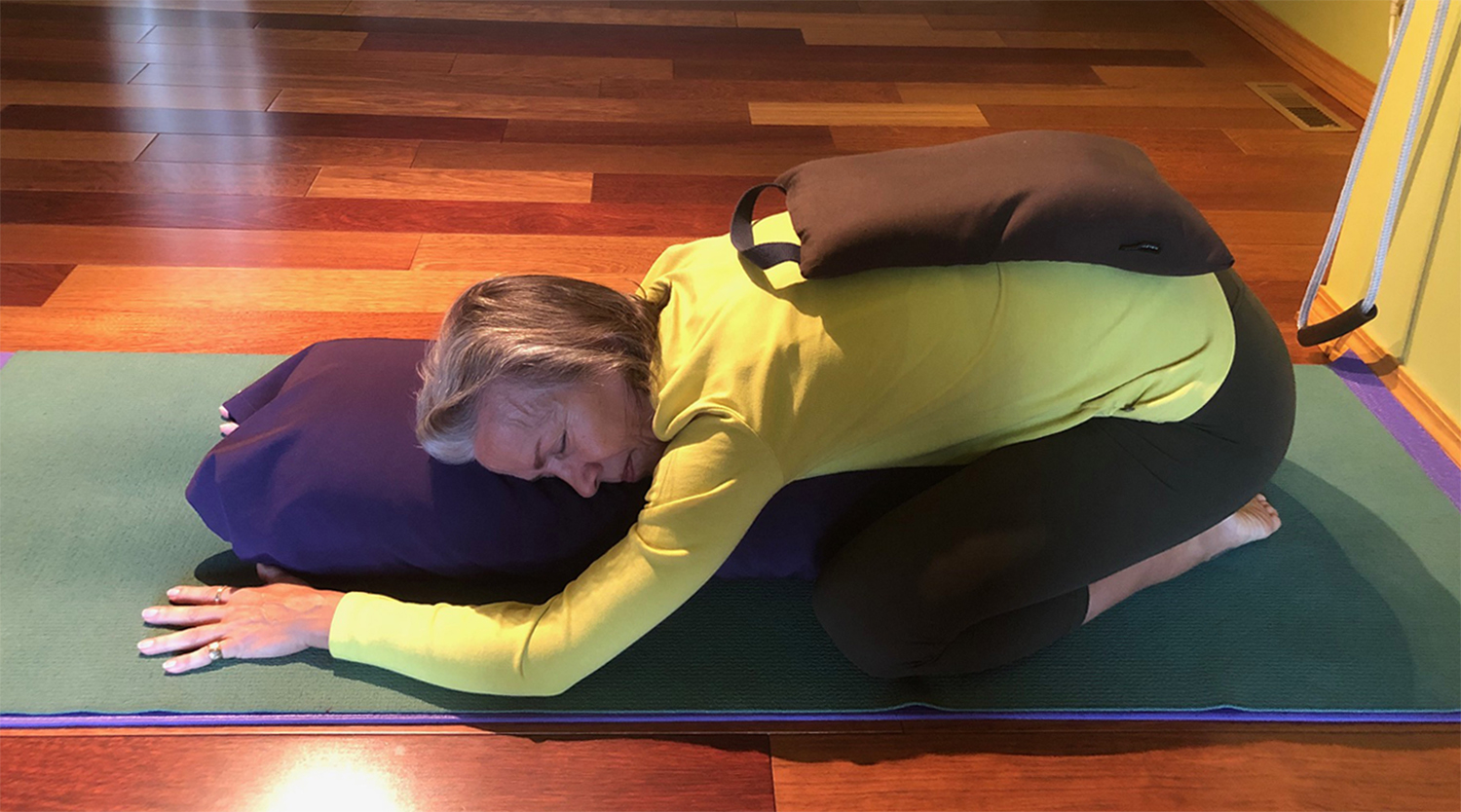
SALAMBA BALASANA (Supported Child Pose) 5 m
– bolster supports full torso, turn head half way through
– with or without sandbag along back spine
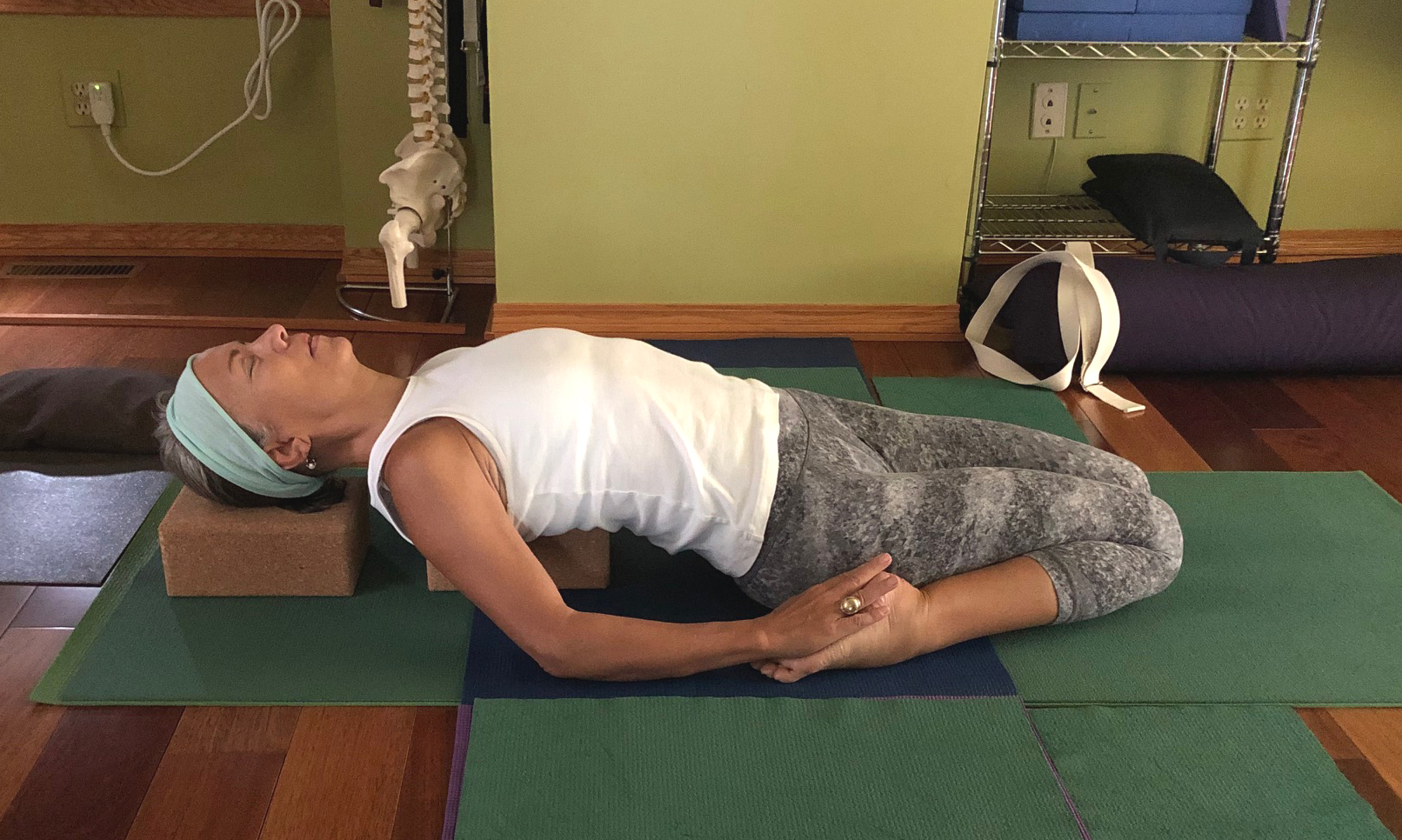
SUPTA VIRASANA (Supported Hero Pose) 3-5 m
– 2 blocks or bolster under rib cage & head
– belt mid thighs is inner knees splay out
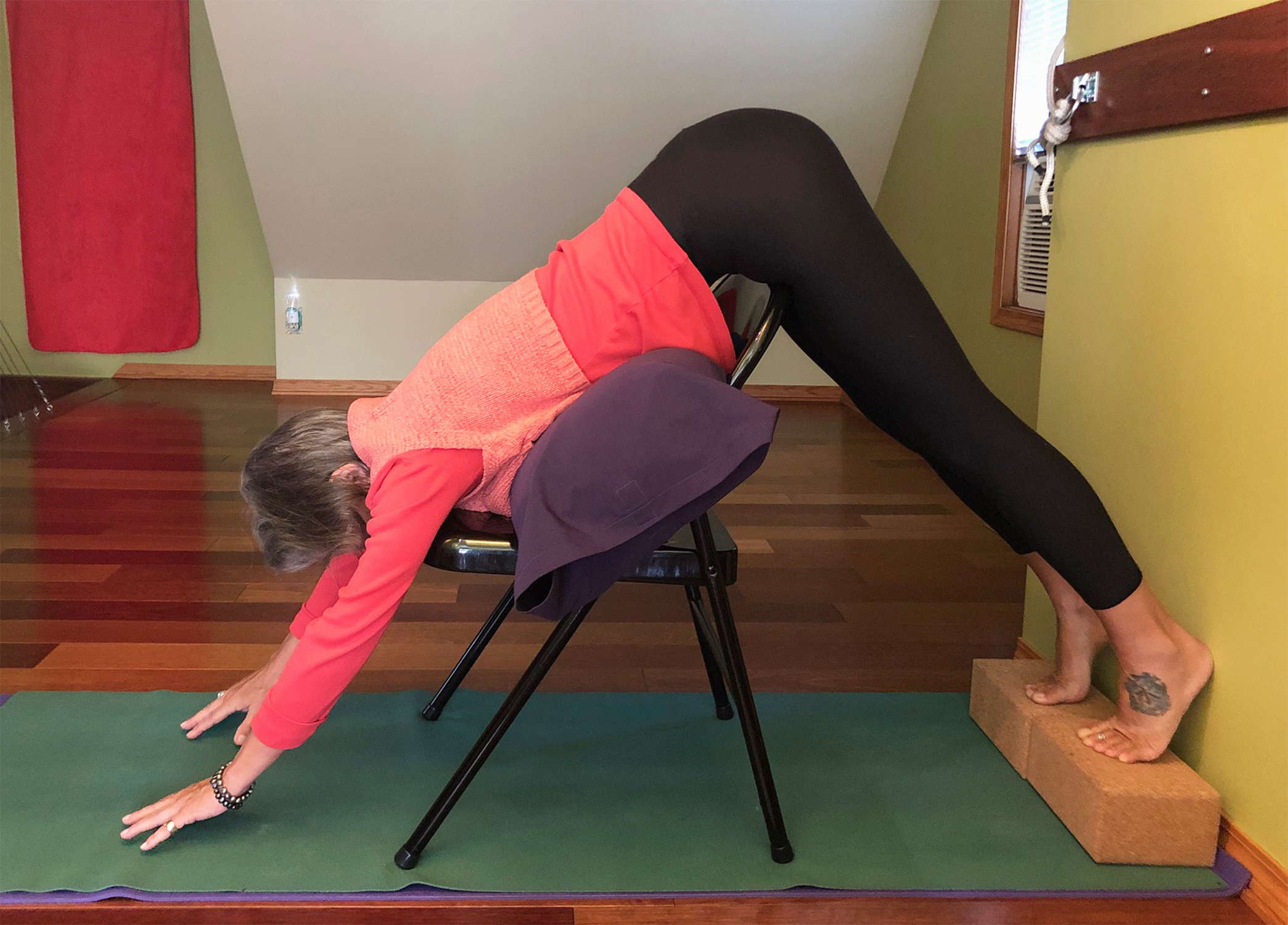
SALAMBA ADHO MUKHA SVANASANA (Supported Down Dog) 5 m
– blocks for feet (diagonal on wall or flat on floor)
– bolster supports upper rib cage
– chair back into quadriceps NOT pubis
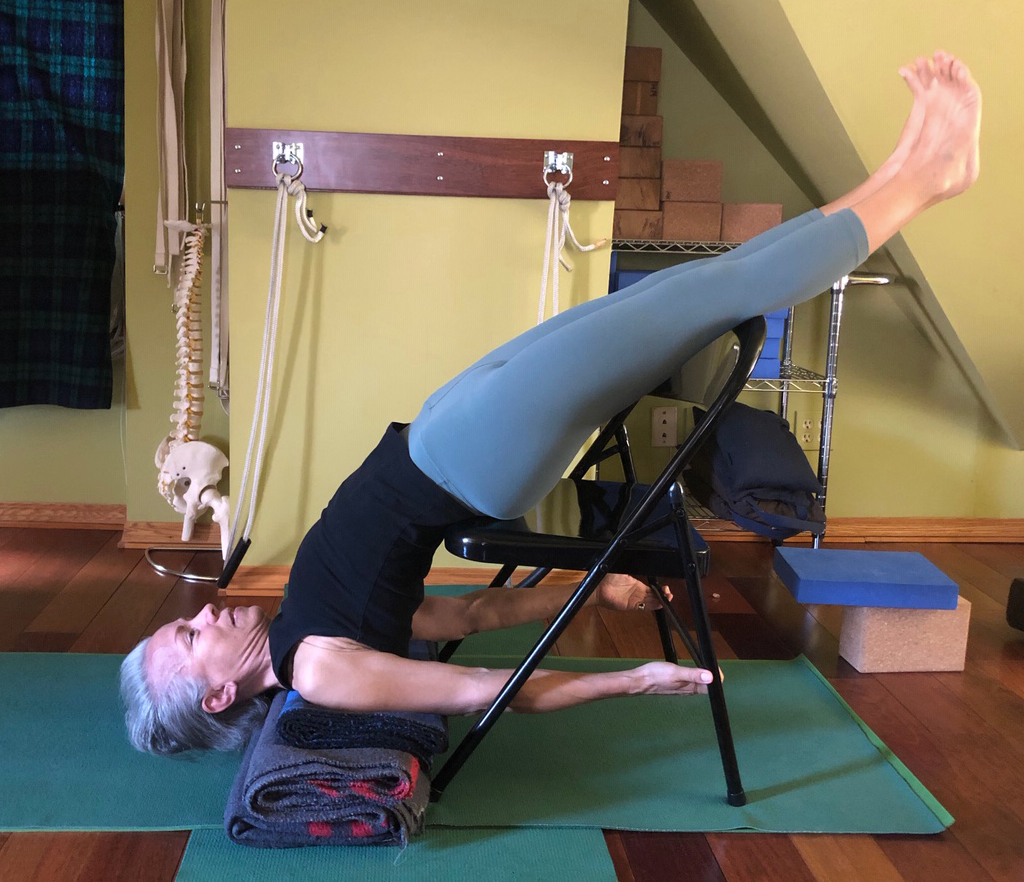
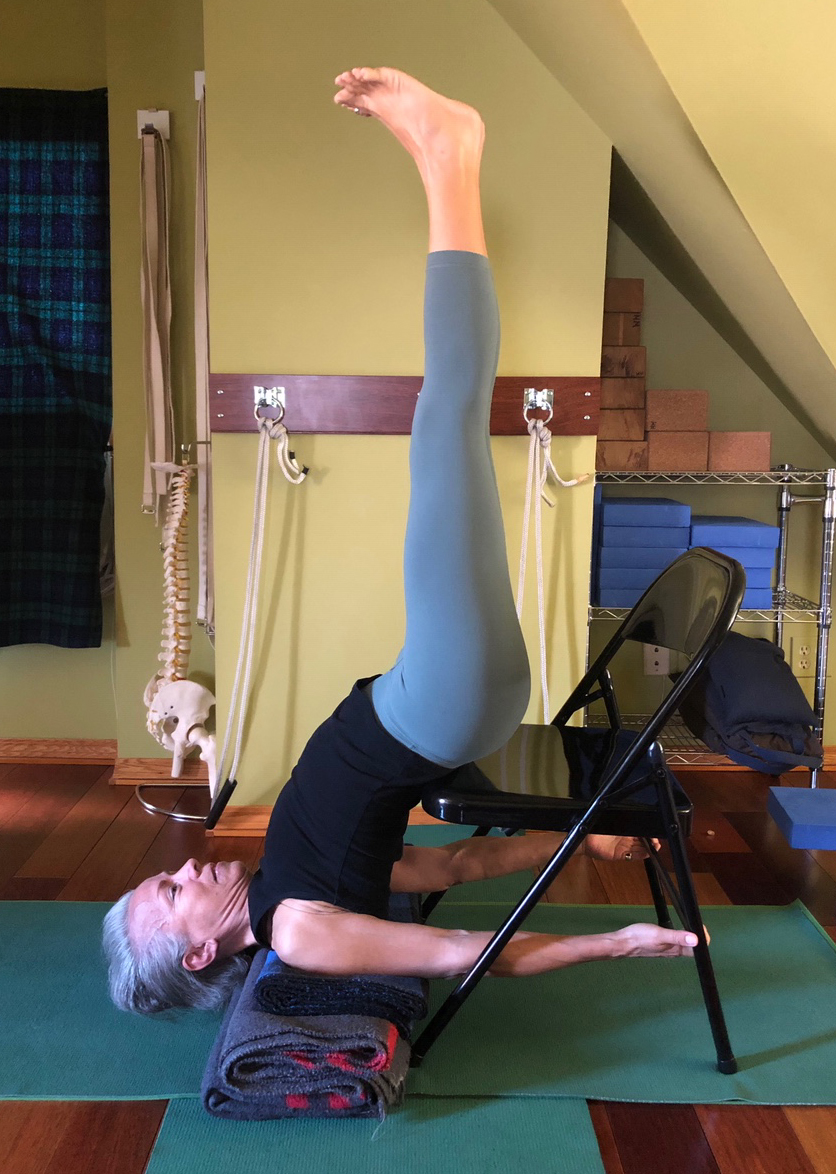
SALAMBA SARVANGASANA (Supported Shoulder Stand) 3 m ea
– shoulder girdle on blankets or bolster support
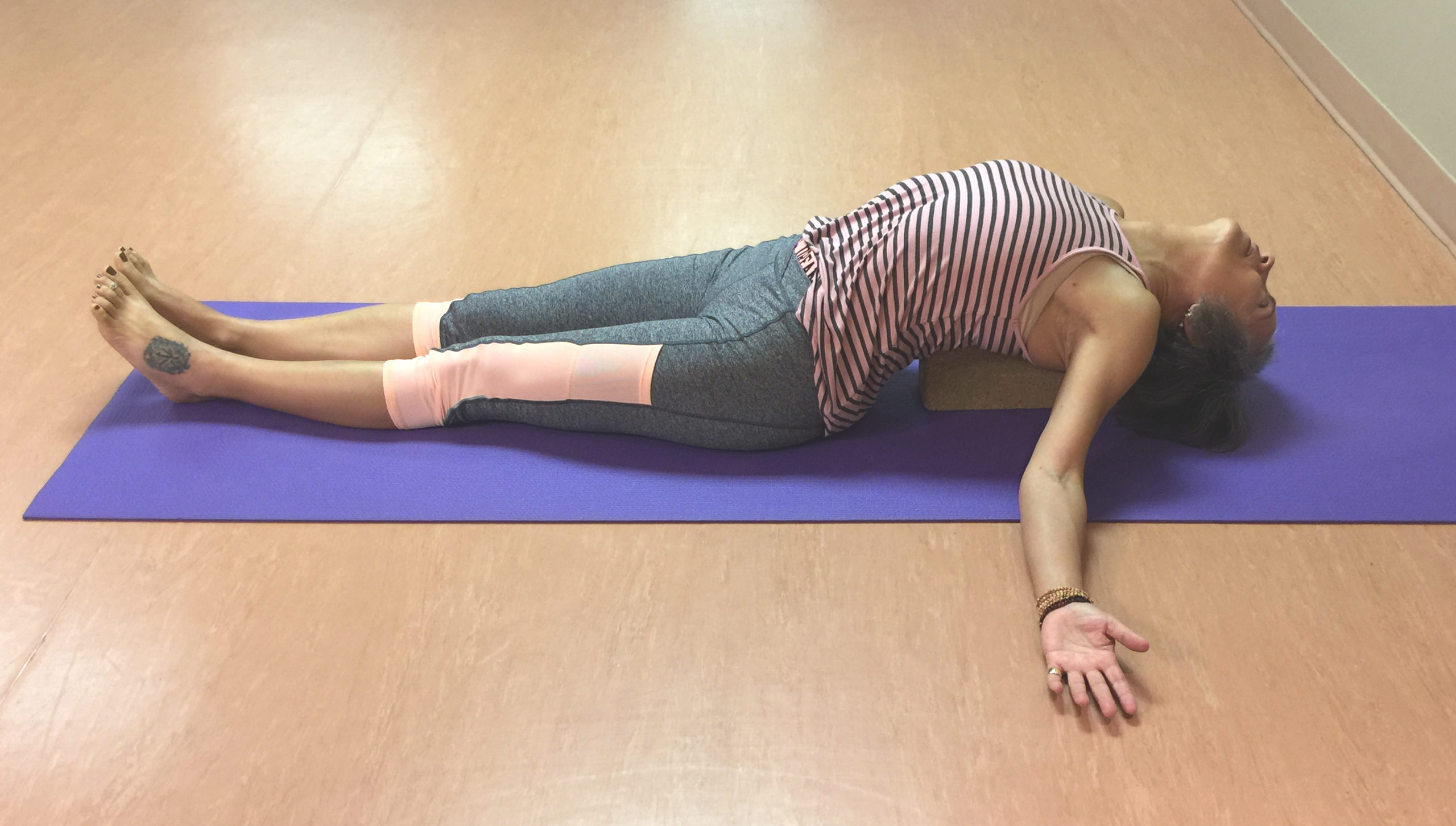
SALAMBA MATSYASANA (Supported Fish Pose) 3 m
– medium block between shoulder blades
– begin with lo block under head
– move to no block if no compression in neck
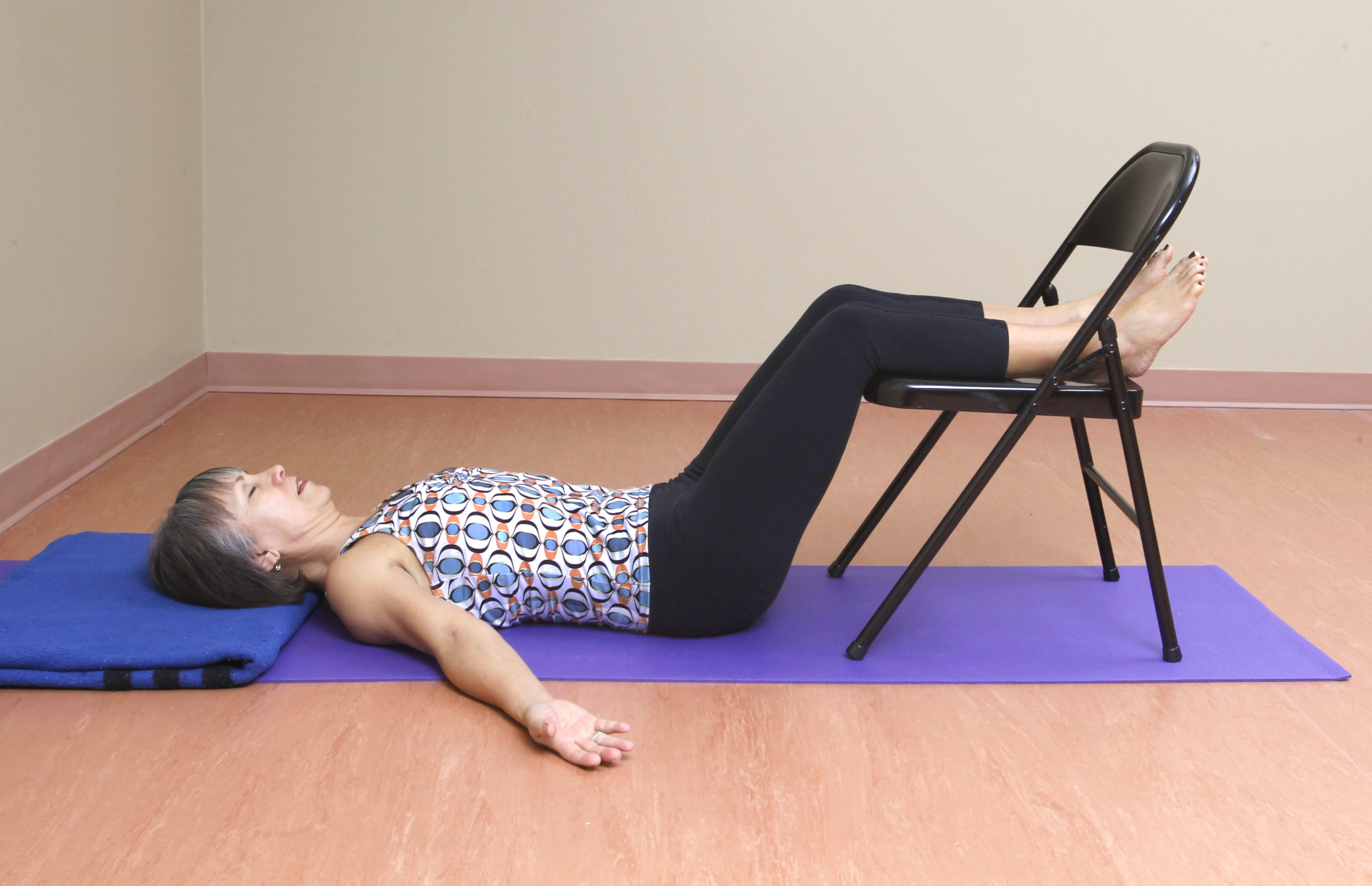
SALAMBA SAVASANA (Supported Corpse Pose) 5-10 m
– chair under calves
May you have happiness and the causes of happiness.
May you be free of suffering and the causes of suffering.
May you never be separated from the supreme source of happiness which is without suffering.




